Did you ever have a close look at your kitchen cabinets? Did their dirty door handles surrounded with extra grime and grease come to your notice? If yes, you must worry about taking up the pain to clean them yourself. But actually, there is nothing to worry about. With an effective and simple mixture of non-toxic, everyday ingredients, you can clean kitchen cabinets yourself and restore their look quickly and with relative quickness.
Steps to clean your kitchen cabinets
Following this guide, you may easily clean your kitchen cabinets to get back to their pristine condition.
1. Find a suitable cleaner
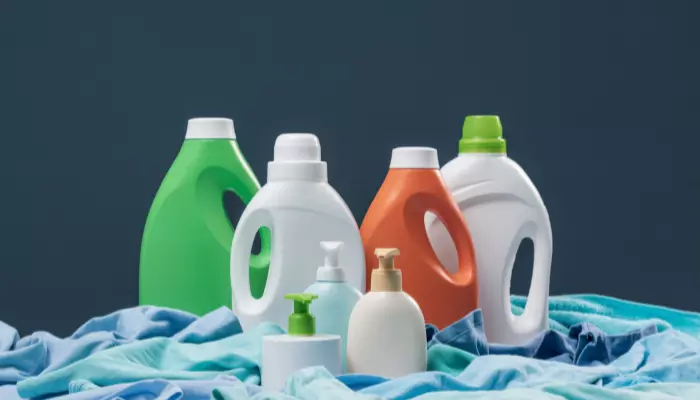
Many cleaners are there to select; therefore, knowing your options is essential. If your cleanup has a special kind of wood or is sticky, many commercial cleaners are available at your local shop, which will benefit the purpose. Household items for daily use- like vinegar, baking soda, and dish soap might be used for creating a cleaner naturally that would not be harsh on the kitchen cabinets. Selecting kitchen cupboard cleaning products depends on your cabinetry. Don’t forget to spot test a product you have decided to apply in some hidden place because the reaction can be harmful.
Also Read
- Modern Kitchen Furniture Ideas: Expert’s Buying Guide
- How to Clean Leather Furniture at Home?
- Spice up Your Kitchen Decor with a Choiceful Farmhouse Rug
2. Make use of the right supplies
The basics are the most useful sometimes, although many cleaning supplies are available for you. You need to choose your cleaner. Using the scrubber of your choice is most welcome but be careful about the strength of the bristle so that it does not scratch the cabinet’s surface. You can also use old toothbrushes, sponges, some rags or cleaning cloths. Prior planning is necessary to clean kitchen cabinets. If you have got sensitive hands, try to invest in one pair of cleaning gloves that can be reused. Thus, you can avoid rashes or dryness.
3. Empty the cabinets
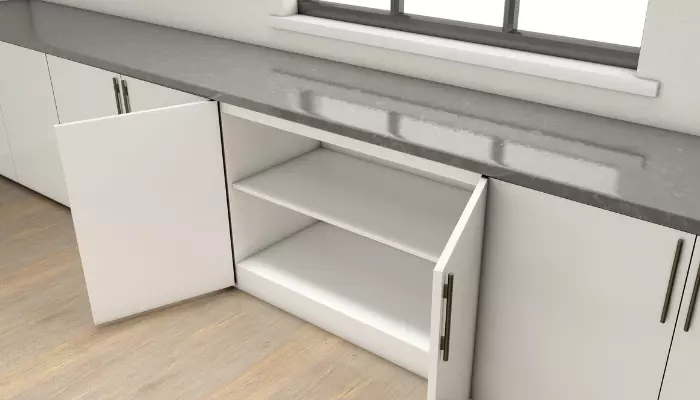
You will need to remove contents from the kitchen cabinets and store them temporarily on countertops or somewhere else. You might opt for staggering cabinet cleaning instead of attempting it all daily. After emptying the cabinets:
- Remove and discard those shelf papers which are torn or too old for further use.
- Wipe or vacuum dust and crumbs from the drawers and shelves if you want a clean and safe kitchen.
- List the items that you are throwing away.
It is because the next time you go to your local grocery store, you can find which items need replacement from the list.
4. Tackling the tops
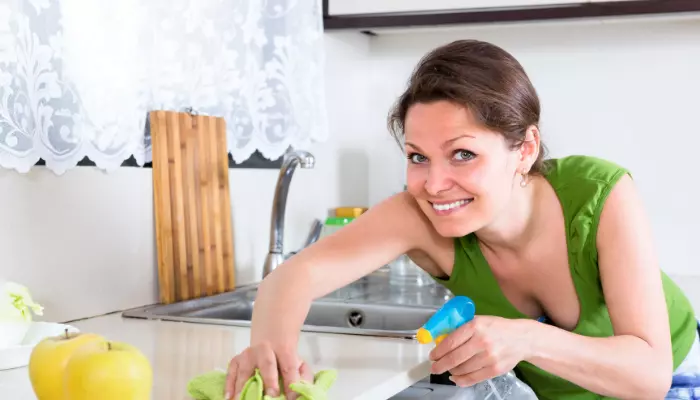
If the height of your cabinets does not reach the ceiling, then a few inches above the uppers could be very dirty. If it is dust only, handle it with a small round brush attached to a vacuum or long-handled duster. In case there are both dust and grease, removing it might be very nasty and the most challenging part of this cabinet cleaning venture. Use a sturdy ladder or step stool to reach the heights and white straight vinegar for squirting the surface. Sprinkle a bit of baking soda. After that, give it some minutes’ dwell time. Scrub with a sponge. Then do scraping with a straight, firm edge- for example, a credit card you don’t use now. Wipe the gunk off with paper towels or a rag. Lightly spray again. Wipe dry using a clean cloth.
5. Wiping the interior

The best way to clean kitchen cabinets is doing the interiors after the uppers. Take one spray bottle and mix it with water and oil-cutting dish soap or laundry detergent. The mixture’s consistency should be two parts water and 1 part detergent for best results. Spray it on the inner side of a cabinet. Then use a sponge or cloth to wipe. You don’t want your cabinets to get very damp? So do not spray extra cleaner on your cabinets’ interior or surface.
6. Wiping the exterior down

Spray the cabinet exteriors with an essential solution for cleaning. Put additional pressure on those dirtier spots. Next, wipe down the exteriors with a sponge or cloth. We sometimes overlook a large amount of debris accumulation on the edges. So don’t forget to wash the cabinet sides even if the spots are challenging to reach, like beside the wall or refrigerator.
7. Handle the hardware and hinges with care
You need to open and close the cabinets frequently all through the day. So when you clean kitchen cabinets, you should carefully clean the hinges and hardware as the handles can become the dirtiest quickly. Properly go at the metal aspects of your cabinets. If there is stubborn grease, make a 50/50 white vinegar-water solution. Spray it on a soft old toothbrush for scrubbing it off from ceramic or metal hardware and the areas surrounding the handles, pulls, and knobs. Then dry. All these can accumulate grease and grime. For cleaning the hinges, wrap the index finger with a dry cloth. Use the toothbrush method if you find grease. In case you are using a cleaner bought from the store, check its label to confirm that it won’t make the hardware stained.
8. Cleaning those tricky spots
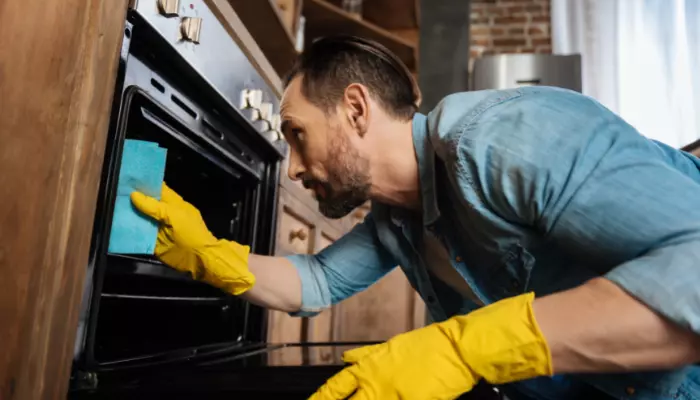
You can’t avoid sticky and greasy situations in a kitchen and might be thinking about how to clean the kitchen cabinet’s grease. Try to create a mix of coconut or vegetable oil and baking soda- one part of the oil and two parts of baking soda. This would lift the dirt and remove the grease, thus leaving your cabinet good like new. Any residue left after primary cleaning can be treated with some more robust cleaner. In the case of painted cabinets, water and white vinegar blended (one part water and one part vinegar) is very effective in removing the grime and simultaneously keeping the paint intact. You certainly don’t want any scratches on your cabinets. So gently scrub the tough spots.
Finally, use a fresh and dry cloth to wipe your cabinets, leaving them fresh, cleaned, and free of moisture.
9. Cleaning the contents
Before you refill the drawers and shelves, check the food packages, dishes, cookware, and the like to ensure that the items are not dirty or dusty. This is an essential part to do when you clean kitchen cabinets. Even when everything looks perfect, swiping the contents with a microfiber cloth will make them more worthy to return to your clean and sparkling cabinets.
How to clean kitchen drain
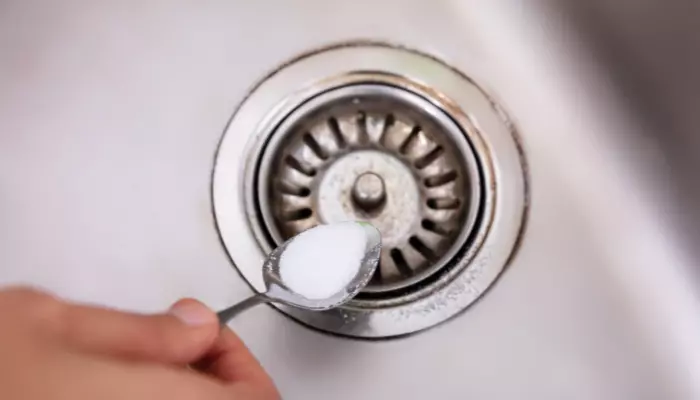
With time, your kitchen drain might collect dirt, food debris, grime, and other residues. It may clog your kitchen pipes and make them stinky. To clean the drain, you can hire a person who is a drain cleaner by profession. You can do it yourself too. Use white vinegar and baking soda to deodorize it, or use hot water to flush it to remove grime and residue.
Conclusion
I hope these tips for keeping your kitchen clean will help you maintain a good condition of your kitchen in the future. Just follow these tips to have your kitchen more orderly. Making plans for cleaning your kitchen might be a procedure but setting time aside and having your game plan can make it worthwhile. Try to clean your kitchen a minimum of two times a year for a perfect kitchen space.
You May Also Like
- Tips for Buying High-Quality Home and Office Furniture
- Which is the Best Office Chair Material?
- What Home Remedy Will Keep Cats from Scratching Furniture?
- How to Choose Your Outdoor Patio Furniture That Last Long?
- Why Teak Patio Furniture is The Best For Outdoor?
- How to Clean and Maintain Old Wooden Furniture Look Brand New?
- How to Decorate your Small Patio?
